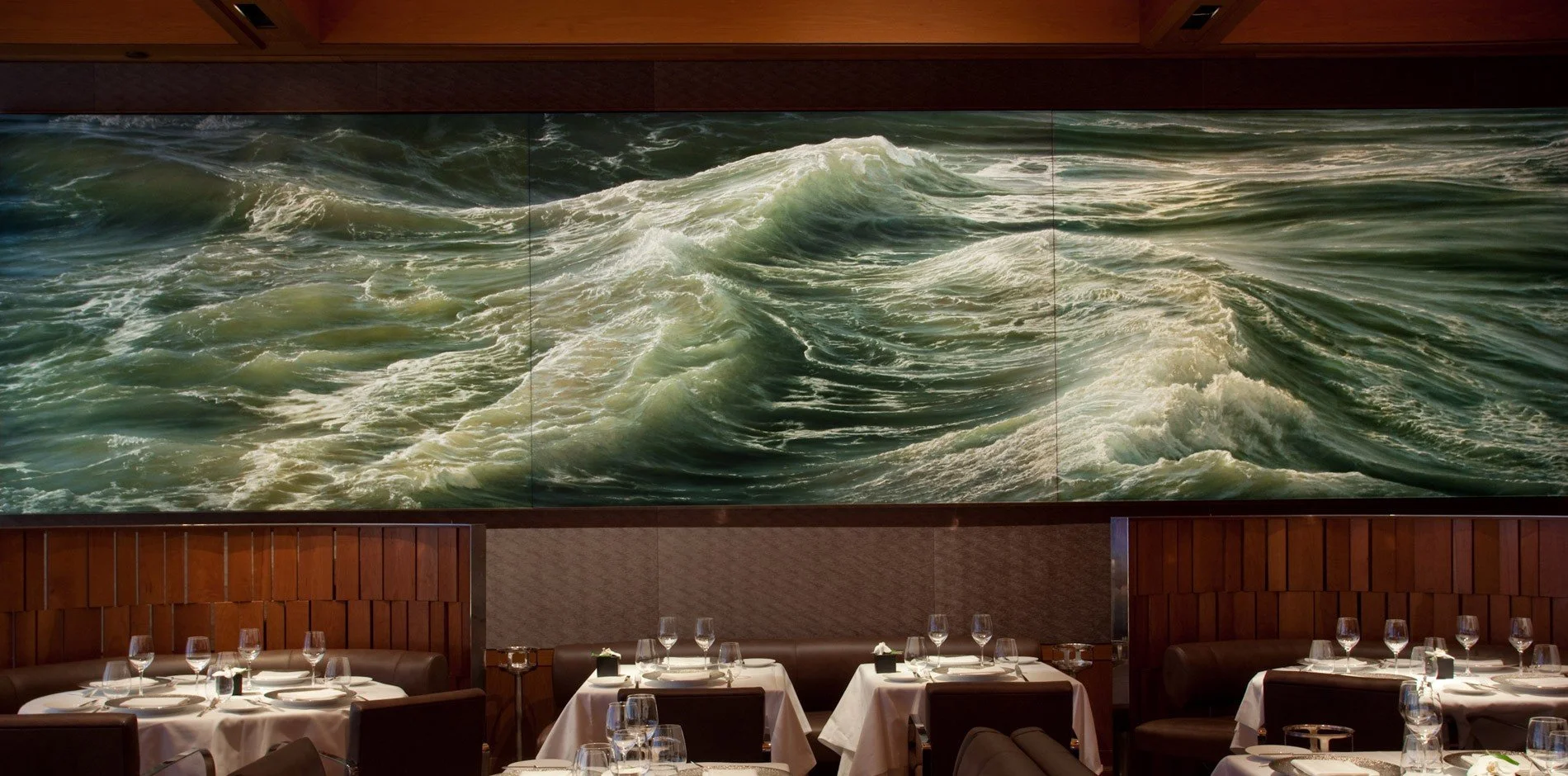GOOD RESTAURANTS: LE BERNARDIN
When our family is in New York and we want to celebrate something big we go to lunch at Le Bernardin. In a perfect world we visit MoMA beforehand (Robert Rauschenberg retrospective, anyone?). Then we walk around the corner for one of the best meals we’ll have all year. Last week, for my birthday, I returned to Maguy Le Coze and Eric Ripert’s wonderful restaurant, which itself just celebrated its fiftieth birthday. That beats me by a little, though it’s certainly aging more gracefully.
Sitting in dining room, with its beautiful lighting and quite incredible table cloths (I am newly obsessed with linen), I started to think about what makes Le Bernardin so special. Years ago, most of my favorite meals were at livelier, less formal places: Prune, Freemans, Minetta Tavern. I preferred a spirited room downtown (and no table cloths, linen or otherwise), where the food was good, sometimes very good, but the experience was great. I felt constrained by the overly-polished dining Meccas, where Chef recommends you eat the bites counter-clockwise. You admired the food, yes, but it could feel drained of joy. Le Bernardin is no downtown boîte—nobody’s mistaking it for Balthazar—but it’s not a cold cube, a withholding minimalist gallery. There’s an art to a memorable meal that goes beyond the food. The people at Le Bernardin have mastered that art.
Le Bernardin is rarefied, to be sure. The menu, as you may recall, begins with a starter that is Raw or Lightly Touched, probably the best fish you’ll eat unless you have an expense account and live in Tokyo. Then a main course, also fish, that’s finished at the table with some inventive but essential sauce poured over or around it. (Years ago I wrote ordered the duck, which is sort of off to the side of the menu, for a story about counterintuitive Ordering Siberia. It was very good, but not really what you’re here for).
Sometimes the simplicity of the fish sits at center stage, say a raw kampachi or a barely marinated fluke. Or you can have something more savory, a Bourguignone sauce with truffled sunchoke purée around the whitest steamed halibut. There’s a surprising lightness to the cooking that doesn’t have you heading straight to the nap room.
There are longtime favorites. Red snapper baked in sea salt for two, which has to be ordered in advance, shows up under a dome the size of a football and you feel like you’ve solved something meaningful. But nothing feels set in its ways. Eric Ripert’s cooking is genuinely curious, he isn’t rolling out the French classics. There’s a Japanese influence—lotus root, daikon-shiitake broth on a barely-cooked salmon. There’s also a vegetarian tasting, at an ice cold $300 a person, that I’ll try if my book is optioned for a film.
Like the best French restaurants the service is refined while putting you at ease, beginning with a very warm welcome. I take these greetings seriously, especially as they seem to be diminishing around town. Name on the reservation? is not the first thing I want to hear from a host (or anybody at a hotel, for that matter). The hosts appreciate that this is a special meal, even if you’re coming for the first time. This sense of respect is reciprocated by those in the dining room, where everybody shows themselves in a flattering light (the gentle dress code helps).
When Le Bernardin does something they do it well. I had dessert described as a pistachio praliné with Grand Marnier Bavarois. Bavarois, I learned, is made of whipped cream, served slightly cold. I now know that is an absolute delight, somehow decadent without being heavy. The cocktail list is no afterthought, try the bar sometime or salon as they call it, if you’re in the neighborhood on an off hour (otherwise reserve first). There’s also a serious selection of Armagnac, if you want to linger, or just to brace yourself for the bill.
The menu, $120 for the prix fixe lunch, not something you’re going to do every day. The wine list, overseen by the remarkable Aldo Sohm, is quite a document. But the sommeliers, friendly each and every one, are happy to recommend wines by the glass, many around $20. You’re not expected to step in the deep end, though that is definitely an option.
This will be an ongoing series of my favorite places to eat in New York and beyond. Some are cash only and only serve wine by the carafe—they won't all be as exalted as Le Bernardin, a stretch, by any definition (though you can get out for less with lunch in the bar). But Le Bernardin stands for something that matters: ambition and execution, yes, but also a human connection that diginifies everybody lucky enough to experience it.
